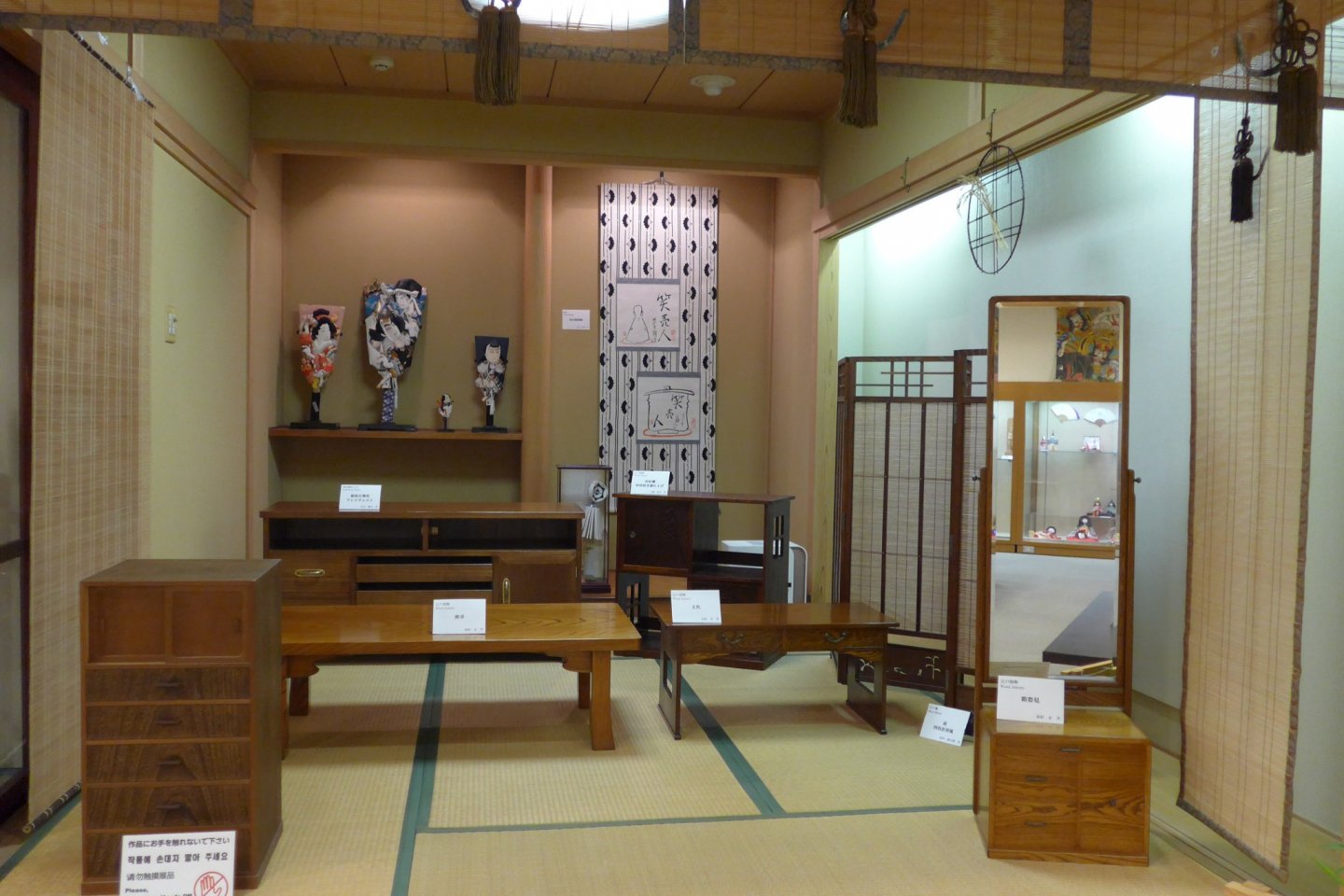Asakusa is always bustling from the influx of crowds visiting Sensoji temple and its numerous rows of shops selling handicrafts, food and souvenirs. It is an exciting area, and this small and humble museum celebrating traditional crafts is often overlooked. Nevertheless, it is a good and quiet place to just enjoy the beauty and ingenuity of the craftsmen of Shitamachi.
The museum is free to enter and displays handicrafts made using traditional techniques. They have special events and rotating exhibitions to show pieces made from various materials. When you first enter the building, there is a live demonstration area to the left. On weekends and special occasions, craftsmen are brought in to show how they make their creations using time-honoured techniques. Unfortunately when I dropped by it was past 5pm, and the demonstrator was packing up already. The museum opens from 10am to 8pm, so you have plenty of time to enjoy the museum, even if you come too late to watch a craftsman in action.
The second floor is where the exhibits are held. The whole museum is small, and it will take less than half an hour to see everything. When I was there, the displays focused on paper lanterns, woodwork, silverware and handmade dolls. They even showed the complex and various sized tools used in the craft.
Japan underwent a huge change and developed rapidly from the 1960s. While this improved the quality of life for a lot of people, it also meant that many of the old ways were abandoned. The number of people still practising old techniques, especially in making handicrafts, has dwindled. The city of Taito (one of Tokyo's special wards) realised the importance of preserving these methods built over many generations and centuries, and commissioned museums such as this one, the Shitamachi Museum and the Calligraphy Museum to allow future generations to appreciate and reflect upon the works of art and industry that have been, in some ways, the building blocks of modern Tokyo.





































